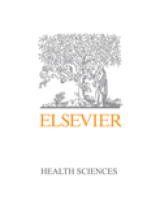This book covers the NVQ Level III Part 2 syllabus making it an essential purchase for second year veterinary nursing students, however, will also be useful for veterinary nurses in practice. Practical tips are a feature of the book and topics covered include: different types of fluid therapy equipment, assessment of fluid balance and administration of fluid therapy.
Key Features
- Covers everything the veterinary nurse or technician needs to know about fluid therapy and how to apply theory to practice.
- Serves as a practical manual that explains this difficult subject in an accessible and easy-to-understand approach at an appropriate level.
- Improves the reader's skills with "In Practice" tips for effective fluid administration.
- Covers the NVQ Level III Part 2 syllabus, making it an essential purchase for second year veterinary nursing students as well as veterinary nurses in practice.
Author Information
By Paula Jane Hotston Moore, MEd, RVN, Internal Verifier and Tutor, University of Bristol, Bristol, UK
1. Water and electrolyte balance in the body: Definition of key terms; Fluid distribution within the body compartments; Electrolyte balance in body fluid; Water balance and its importance; Ways in which fluid is lost from the body; Ways in which fluid is taken into the body; Normal fluid requirements; 2. Assessment of fluid balance: Definition of key terms; Causes of dehydration; Causes of hypovolaemia; Clinical signs of dehydration; Ways of assessing dehydration and hypovolaemia; 3. Acid base balance: Significance of acid base balance to the animal; How the body maintains its pH; How changes to the body’s pH arise; Causes of metabolic acidosis/alkalosis and respiratory acidosis/alkalosis; 4. Types of fluid available: List of fluids available in the UK; List of constituents in each fluid; How fluids differ from each other and why this is significant; 5. Blood administration: When administration of blood is indicated; Blood collection; Blood typing; Storage of blood; Blood volume; Blood transfusions; Plasma/blood products; 6. When to use each fluid: Shock – definition and types of shock; Common conditions and when to use each fluid – and why; 7. Administration of fluid therapy: Routes available for fluid therapy administration; Common routes of intravenous fluid therapy – veins and anatomical locations; Intravenous catheter placement; 8. Equipment available for administration of intravenous fluid therapy: Describe equipment, how and when it is used; 9. Calculations and Flow rates: Explanation of calculations; Worked example; How to calculate the amount of fluid to give and the rate of flow; 10. Monitoring the Patient: Central venous pressure; Clinical signs of over transfusion; Blood transfusion reactions; General care of patient whilst receiving intravenous fluid therapy; Care of intravenous catheters; Prevention of patient interference; Common problems; 11. Other species (e.g. rabbits, reptiles, calves, etc): Clinical situations when fluid therapy is indicated; How to administer fluid therapy in species other than cat or dog; Different equipment required
"This is the first book aimed at veterinary nurses and technicians solely on the subject of fluid therapy. With only 110 pages the book is concise but to the point, it offers the reader the opportunity to refer to certain sections quickly, as well as being a very useful study guide for those involved with the S/NVQ veterinary nursing qualification.
The diagrams, I personally think, are excellent, clear, well drawn and easy to follow, especially the one showing placement of an over-the-needle intravenous catheter.
Chapter 5 is titled 'Calculating fluid requirements and flow rates', which is probably the most important chapter in the whole book. This subject area is generally where students tend to struggle in their exams and lose valuable marks.
I highly recommend this book for all students and qualified veterinary nurses to use as an aid for revision and a handy reference guide in practice." Kerry Brennand, Veterinary Nursing Times, July 2004
book is ideal for student veterinary nurses and an excellent reference book for others, including vets. The practical content is comprehensive and would be very useful for veterinary nursing NVQ practical examinations.
The text is clearly written, informative and concise, with clear diagrams, clinical case questions and worked answers - excellent for anyone who has trouble working out drip rates.
I found the chapters on acid-base balance and fluid requirement and flow rate calculations the most useful. They made two complicated subjects easy to understand, with each chapter starting with highlighted key points." Nicola Ackerman, BSc(Hons), VN, Veterinary Nursing, August 2004




